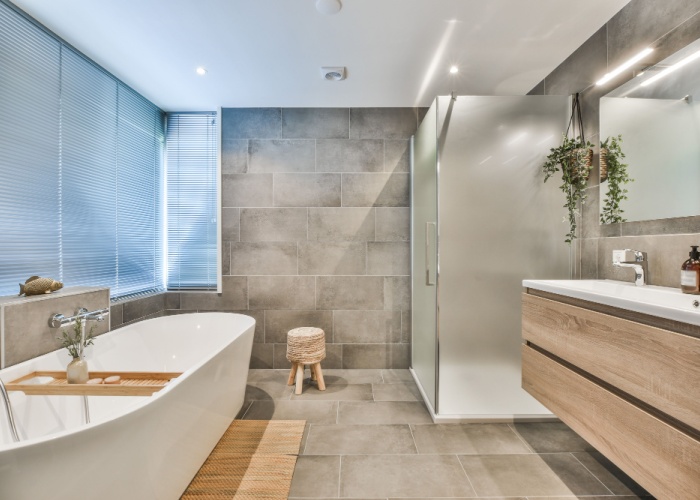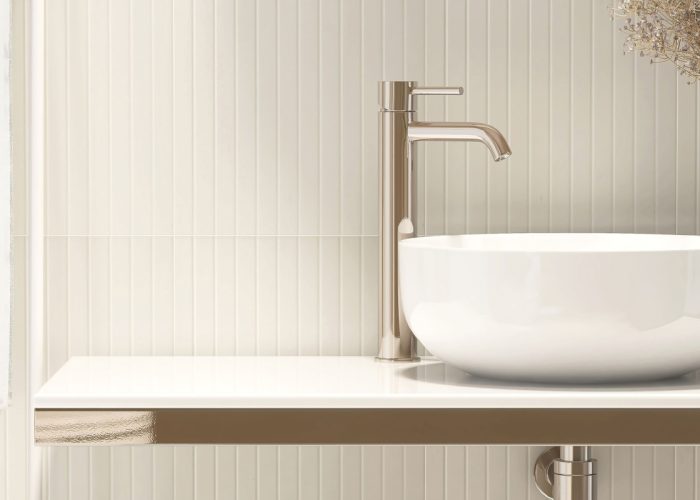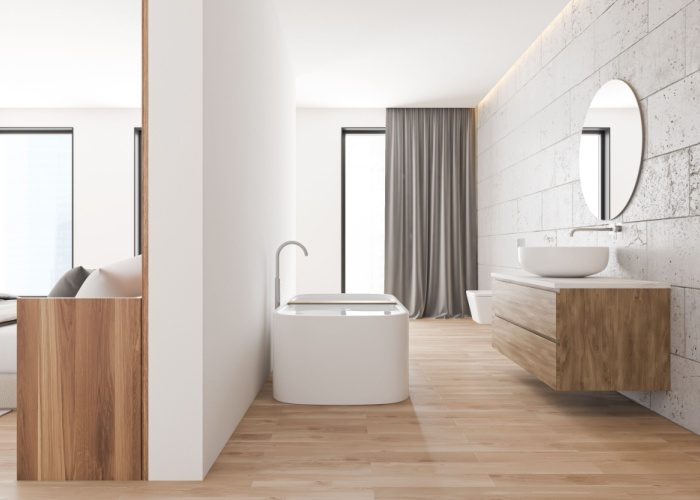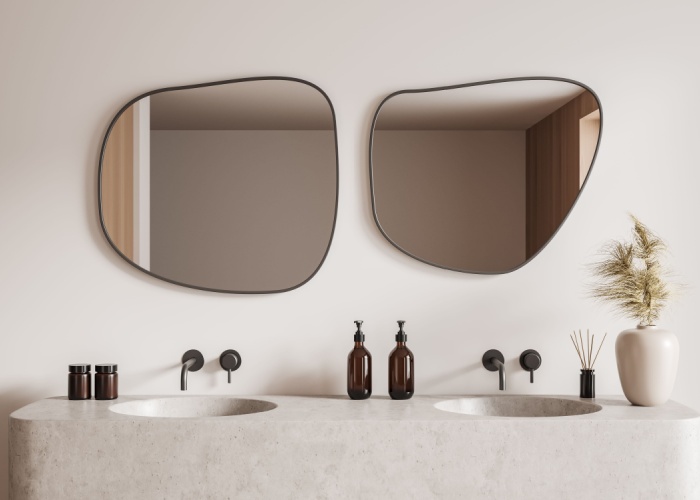Bathroom renovations
New Bathroom Designs: Trends and Smart Solutions for Modern Homes
This year, innovative bathroom ideas are exploding, introducing the latest trends to suit every taste and lifestyle. Whether you envision a modern bathroom oasis or are searching for modest yet effective upgrades, this comprehensive guide will inspire you to create the dream bathroom that elevates your home.
By considering the balance of aesthetics and functionality, you can transform any space—big or small—into a comfortable retreat. From colour schemes and sustainable materials to advanced technology and layout essentials, this guide explores how new bathroom designs are reshaping contemporary homes.
Latest Bathroom Design Trends for 2025
As we enter a new year, the bathroom design landscape embraces sustainability, wellness, and seamless technology. Far from being mere utility spaces, today’s bathrooms serve as personal sanctuaries that soothe the mind and body.
1. Spa-Like Sanctuaries for Wellness
Many homeowners are now seeking a spa-inspired environment at home. Large rainfall showerheads and soaking tubs are particularly popular, creating a sense of tranquillity usually reserved for luxury retreats. Adding gentle lighting, aromatherapy features, and natural elements like pebble-tiled flooring fosters a serene ambience that encourages relaxation.
2. Nature-Inspired Elements
Organic shapes, earthy colours, and materials such as timber accents or bamboo inserts accentuate the calm, restorative effect that most bathroom ideas aim to achieve. When woven into a contemporary bathroom, these natural elements can foster calm amid the hustle and bustle of daily life.
3. Smart Technology and Digital Integration
Clients and designers alike are increasingly open to featuring cutting-edge technology, from voice-activated digital shower controls to mirrors with built-in news displays. In a modern bathroom, automated lighting and sensors can adjust brightness based on the time of day, ensuring an energy-efficient approach to everyday routines.
4. Sustainable and Eco-Friendly Designs
Participants in the latest bathroom trends recognise the importance of environmental responsibility. Designers are reducing waste by incorporating water-saving features like dual-flush toilets. Natural stone, recycled glass, and low-VOC paints help create an eco-conscious bathroom design that supports global sustainability efforts. These changes also offer cost savings over time through reduced water and energy bills.

Colour Trends and Material Selections
Colour and material choices are pivotal in setting the mood and tone for a bathroom, whether you’re updating a guest bathroom or remodelling a chic ensuite.
Warm Neutral Palettes
Australian homeowners are gravitating towards subdued, neutral tones. Shades like soft beige, pale grey, or earthy brown evoke calmness and help bounce light around the space. Pairing these hues with crisp white fixtures creates a fresh, airy ambience that suits both large and small bathroom areas.
Textured Surfaces and Patterned Tiles
To add visual depth, consider introducing textured surfaces or patterned tiles. Geometric shapes woven into shower niches or feature walls create a bold statement, especially when used sparingly. Textured wall panelling around the bath or behind fixtures can contrast elegantly with smooth vanity finishes, creating a balanced interplay of materials.
Premium Finishes
High-quality finishes such as marble countertops, quartz benchtops, or brushed brass tapware add timeless sophistication. Although these materials may be pricier initially, many property owners view them as worthy long-term investments that increase aesthetic appeal and resale value.
Vintage-Modern Fusion
This year, it’s common to see a fusion of old and new. Victorian-style clawfoot bathtubs can sit harmoniously beside sleek, floating vanity units. Strategically pairing an antique mirror with minimalist lighting elements can create a unique, eclectic design that stands out.
Space-Optimising Solutions for Small Bathrooms
Not everyone has the luxury of an abundant floor area, but new designs cater to properties of all sizes. With creative planning, small bathrooms can still be bright, functional, and stylish.
Strategic Storage and Built-Ins
Adding innovative storage solutions is a common way to optimise a small bathroom. Recessed shelves in shower walls keep toiletries organised without encroaching on precious space. Built-in cabinetry above the toilet can store linens, eliminating the need for bulky cupboards. The vertical dimension is utilised with thoughtful storage in the walls without making the bathroom feel cramped.
Space-Saving Fixtures
Consider installing wall-mounted toilets and floating vanities to free up the floor area, enabling a more open flow. A corner sink is another clever option, especially for powder rooms or tight layouts. These choices can make a small bathroom feel more expansive by uncovering additional centimetres of usable space.
Visual Illusions
Light-coloured surfaces and large mirrors reflect brightness, making petite areas appear larger. Frameless glass doors around a walk-in shower can also visually extend a space, blending seamlessly with the rest of the room. Simple tricks like hanging curtains closer to the ceiling can draw the eye upward, increasing the perceived height.
Multi-Functional Elements
Where space is tight, functional versatility can be a godsend. One option is a shower seat that doubles as storage, allowing you to place towels or bath essentials beneath a sturdy bench. The same applies to mirrored medicine cabinets featuring built-in LED lights—a practical solution combining extra storage with essential lighting.

Clever Storage Ideas
Clever storage can transform even the most compact bathroom layout into an efficient and organised space.
1. Wall-Mount Options and Vertical Storage
Wall-mounted cabinets or floating shelving units keep the floor free for foot traffic. Position them high enough to avoid feeling cluttered. In narrow bathrooms, tall cabinets can stretch from floor to ceiling, offering plenty of storage without dominating the limited floor area.
2. Hidden Compartments
Vanities with hidden compartments, such as drawers disguised behind sleek panels, work wonders in preserving the room’s streamlined feel. Storage nooks within the shower walls can also reduce clutter by keeping bath products neatly out of the way.
3. Under-Sink Organisation
Instead of tossing cleaning supplies haphazardly under the sink, consider installing pull-out baskets or stackable bins. This approach makes it easier to keep track of items and maintain a fresh look.
Sustainable and Eco-Friendly Bathroom Features
Sustainability remains a prevailing concern in Australian homes, and bathrooms are a prime spot for eco-friendly upgrades.
1. Water-Efficient Fixtures
Installing low-flow showerheads and taps reduces daily water waste without significantly affecting the shower experience. Modern innovations allow you to maintain pressure while cutting down on unnecessary consumption.
2. Choosing Conscious Materials
If possible, opt for locally sourced or recycled materials. Bamboo panels, reclaimed timber, and recycled glass tiles add a distinctive flair while minimising your carbon footprint with natural materials. Low-VOC paints improve air quality by limiting the release of harmful chemicals.
3. Energy-Saving Amenities
Incandescent bulbs are quickly becoming a thing of the past. Though more expensive initially, LED lights last far longer and consume much less energy. Combining LED lighting with motion sensors adds to considerable savings on electricity bills over time.
4. Minimising Waste
In line with the latest bathroom trends, many homeowners request built-in recycling or composting setups to reduce landfill-bound refuse. Refillable soap dispensers, shampoo bottles, and cleaning solutions also decimate the plastic waste generally associated with bathroom products.

DIY vs Professional Installation
Determining whether to handle renovations yourself or hire experts can be a significant decision that impacts project scope, costs, and outcomes.
DIY-Friendly Jobs: Tasks such as painting walls or installing cabinetry hardware are usually manageable and can reduce reliance on external labour. Replacing a straightforward light fixture or swapping out tapware can also be feasible for those with basic DIY skills.
Hiring Professionals: Complex undertakings—such as plumbing alterations, electrical rewiring, or major structural changes—should remain the domain of licensed tradespeople. Professional installers have the expertise to handle hidden complications and ensure compliance with building regulations, preventing more costly mishaps down the track.
Time vs Cost: While DIY can be cheaper, it can also be time-consuming and occasionally risky if issues arise. Professional contractors often work faster and offer guarantees for their work, giving you peace of mind.
Practical Design Tips for Different Bathroom Sizes
One of the biggest factors influencing new bathroom designs is the actual size of the room, whether it’s a small guest bathroom or a sprawling master ensuite.
1. Small Bathroom Strategies
Limited space demands creative innovations. Light colours, maximised vertical storage, and a walk-in shower without a bulky shower curtain or tub base can keep the area feeling open in a small space. Consider choosing a floating vanity to make the floor plan look less obstructed, instantly enlarging how the space is perceived.
2. Medium-Sized Layouts
A medium-sized bathroom can balance style and practicality. If space allows, adding a separate bath (even a freestanding tub) and a walk-in shower is a growing trend in Australian homes. A well-placed built-in shelf or bench can also serve as a transitional feature that seamlessly divides wet and dry zones.
3. Large Bathroom Perks
Homeowners with more generous floor plans can explore luxurious features like freestanding bathtubs, double vanities, or a dedicated make-up station. A larger footprint allows for distinctive zones—separating the shower, vanity, and bathtub areas for an elegant, spa-like approach.
4. Ensuite Bathroom Considerations
Ensuite bathrooms typically require a sense of unity with the connected bedroom. Colours and materials should segue cohesively from the sleeping area to the bathing quarters, ensuring a smooth transition. Privacy is also paramount; frosted glass partitions or partial walls can provide seclusion without making the ensuite feel closed off.

Layout Planning Essentials
Before finalising any renovation, layout planning is crucial for ensuring an efficient and comfortable bathroom design.
- Traffic Flow: Make sure doorways remain unobstructed and easy to move through. Position fixtures in a logical sequence, creating a natural progression from entry to sink, shower, or toilet.
- Placing Fixtures: Sinks and toilets often work best near existing plumbing lines, lowering labour costs and minimising structural changes. If you’re keen on a major overhaul, be sure to consult an interior designer or structural professional for guidance.
- Lighting and Visibility: Strategic lighting ensures you can apply makeup without shadows or safely step out of the shower. Windows or skylights introduce welcome natural light, while well-placed artificial lights provide brightness for tasks like shaving or grooming.
- Integrated Storage: Avoid letting clutter compromise your bathroom layout. Built-in niches, recessed cabinets, or a floating vanity with multiple drawers all help keep items organised while maintaining a sleek appearance.
Looking for Bathroom Renovation Experts?
The year 2025 signals a fresh generation of new designs prioritising sustainability, technology, and personal comfort. You can craft a modern bathroom that genuinely enhances your daily routines by embracing the latest bathroom trends—such as nature-inspired finishes, refined colour choices, and savvy storage solutions.
What is your favourite bathroom design feature or style? If you’re ready to transform your bathroom into a more contemporary haven, contact Hunter Bathroom Renovations today for expert guidance. Our professional designers will help you create a dream bathroom that blends form and function, improving your home and quality of life for years to come.
Share
Jarrod Adnum
Jarrod Adnum is the founder of Hunter Bathroom Renovations. He is proud to lead an experienced team and support staff that are experts in their field. All staff ensure you are getting the best solutions and service for your bathroom.

